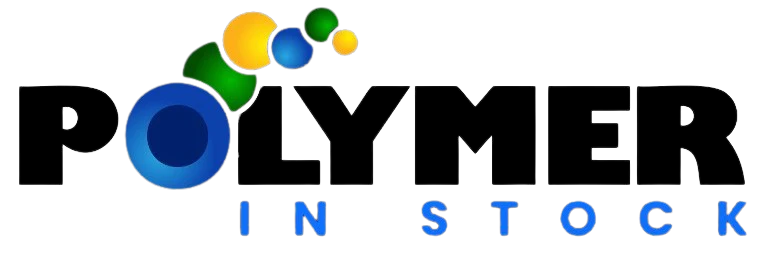
Over the past year, the recycled polymer industry has faced one of its most challenging phases in recent memory. From declining prices to inconsistent demand and rising competition from cheaper virgin resins, market sentiment has been cautious. However, the latest ICIS report (October 2025) offers a much-needed ray of optimism. According to their analysis, plastic scrap pricing across several major grades may have finally hit a bottom.
This potential stabilization is encouraging, especially for suppliers and converters across India, Southeast Asia, and the Middle East — regions where recycled polymer demand continues to grow in response to sustainability commitments and cost optimization.
A Closer Look at Plastic Scrap Pricing in 2025
The ICIS data highlights how the global recycled polymer market has behaved unevenly throughout 2025.
-
rPET flakes (post-consumer) saw a month-on-month decline of nearly 7%, while food-grade pellets dropped around 5%.
-
Recycled HDPE (rHDPE), particularly the natural-grade pellet, recorded an 11% drop compared to the previous month — but still stood 21% higher year-on-year, indicating resilience in demand for high-quality recyclates.
-
rLDPE pellets slipped only slightly, and recycled PP remained largely stable.
The pattern suggests that while prices have cooled, the steep downward spiral has eased. After months of volatility, the market is showing signs of steady ground — what ICIS refers to as a “pricing floor.”
For companies like Polymer in Stock, which source and distribute both virgin and recycled materials, this phase is not just about surviving the slump — it’s about preparing for the next cycle of recovery.
Key Factors Behind the Stabilization
1. Inventory Adjustments and Market Slowdown
In the last quarter of every financial year, manufacturers typically adjust inventory to manage cash flow and prepare for new contracts. This “destocking” period, seen both in Western and Asian markets, has temporarily softened demand. However, once inventories normalize, restocking could trigger renewed activity, supporting prices in early 2026.
2. Virgin Resin Competition
The gap between virgin and recycled resin prices has narrowed due to abundant virgin supply and falling basic prices. While this creates short-term pressure on recyclers, it also encourages process innovation — improving recycling efficiency and material quality to stay competitive. In India and the UAE, many recyclers are now investing in upgraded washing and extrusion lines to produce export-grade recycled polymers.
3. Policy and Sustainability Goals
Government mandates and brand commitments to use recycled content are now shaping demand.
-
In India, the Plastic Waste Management Rules continue to tighten extended producer responsibility (EPR) obligations.
-
In Southeast Asia, similar regulations are being introduced to meet UN sustainability targets.
These shifts are building a foundation for long-term demand — ensuring that once market confidence returns, recycled polymers will remain integral to brand strategies.
4. Quality as a Differentiator
Across all regions, a clear divide is emerging between commodity recyclate and premium-grade recycled material. Natural, food-grade, and traceable polymers are holding value even in a weak market.
For suppliers, this trend emphasizes one key point: quality is the new currency in polymer trade.
What This Means for Polymer Suppliers
For distributors and suppliers, especially those catering to B2B buyers in India and Asia, this transition phase is crucial. Stabilizing prices means it’s time to plan forward-looking procurement strategies rather than reacting to volatility.
At Polymer in Stock, for instance, we view this market phase as an opportunity to strengthen partnerships with manufacturers seeking reliable supply channels.
Here’s how suppliers can leverage the current scenario:
-
Secure contracts early: With recycled polymer prices stabilizing, bulk contracts signed now may offer better margins when prices recover.
-
Offer hybrid solutions: Combining virgin and recycled grades allows customers to meet performance and sustainability goals together.
-
Enhance traceability: Clients increasingly demand transparency — certification, testing reports, and quality audits build trust.
In short, the focus is shifting from price competition to value creation — and that’s where strong supply chain partners can truly stand out.
Regional Market Snapshot: Asia Leading the Transition
While the ICIS data focuses on the U.S. and European markets, the impact resonates globally. In Asia, particularly India, Pakistan, and the UAE, recyclers are facing a unique combination of challenges — rising collection costs, inconsistent bale quality, and energy price fluctuations.
However, these markets also present the fastest recovery potential.
-
India’s push for circular economy frameworks is driving local demand for rPET and rHDPE.
-
Exporters in the UAE are tapping into Europe’s premium-grade demand.
-
Pakistan’s recycling sector, though still fragmented, is showing early signs of consolidation and compliance with export standards.
The growing alignment between policy, brand requirements, and industrial innovation across Asia signals that regional recovery may outpace global averages once the market turns.
The Outlook: From Uncertainty to Cautious Optimism
ICIS notes that while short-term conditions remain sluggish, the signs of a bottoming out are evident. For the next two quarters, prices are likely to hold steady, with gradual improvement expected by mid-2026.
For the polymer ecosystem — from recyclers to converters — the coming months are about strategic patience.
Companies that invest now in efficiency, quality control, and supply partnerships will be best positioned to benefit once demand accelerates.
At Polymer in Stock, we continue to observe these developments closely, aligning our sourcing and distribution strategies to ensure our clients get access to consistent, certified, and competitively priced materials. Stability in pricing brings predictability — and predictability fosters growth.
Conclusion
After nearly two years of volatility, the recycled polymer market seems to be finding balance again.
While global demand hasn’t fully rebounded, ICIS’s analysis provides optimism that the worst may be behind us. For the polymer industry — and particularly for suppliers in India and Asia — this stabilization opens doors to rebuilding confidence, reinforcing sustainability goals, and reshaping supply chains for the next growth cycle.
In an evolving market, adaptability and quality will define the winners. And as the industry moves from decline to stability, it’s clear that recycled polymers are not just part of the solution — they are central to the future of sustainable polymer manufacturing.



 +971 509205838
+971 509205838










